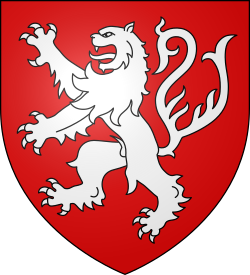List of lords of Montfort-l'Amaury

House of Montfort
- Guillaume de Montfort (? – before 1053)
- Amaury I de Montfort (c.1003? – 1053)
- Simon I de Montfort (1053–1087)
- Amaury II de Montfort (1087–1089)
- Richard de Montfort (1089–1092)
- Simon II de Montfort (1092 – c.1101)
- Amaury III de Montfort (c.1101 – 1137)
- Amaury IV de Montfort (1137–1140)
- Simon III de Montfort (1137–1181)
- Amaury V de Montfort (1181–1182)
- Simon IV de Montfort (1183–1188)
- Simon V de Montfort, 5th Earl of Leicester (1188–1218)
- Amaury VI de Montfort (1218–1241)
- John I of Montfort (1241–1249)
- Beatrice, Countess of Montfort (1249–1311) [1]

